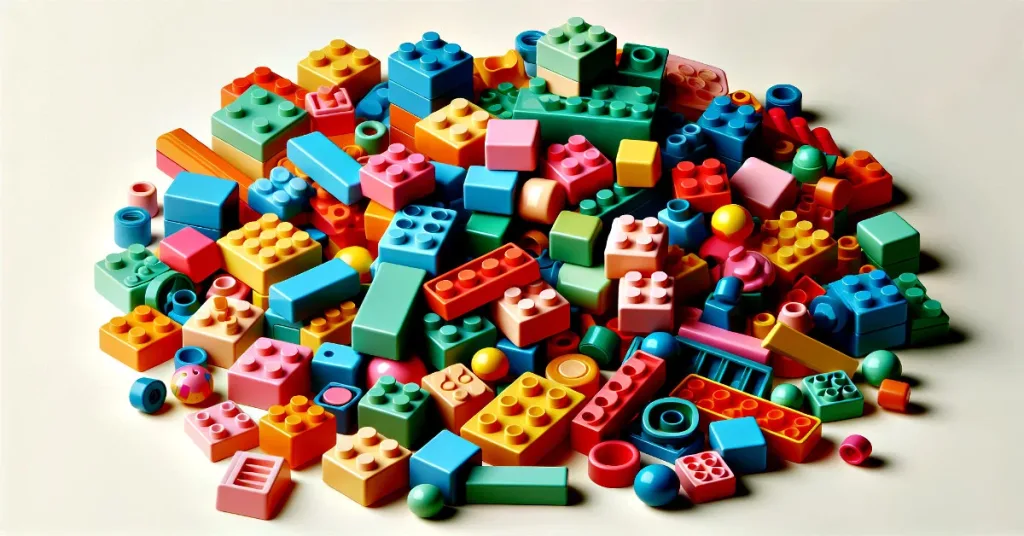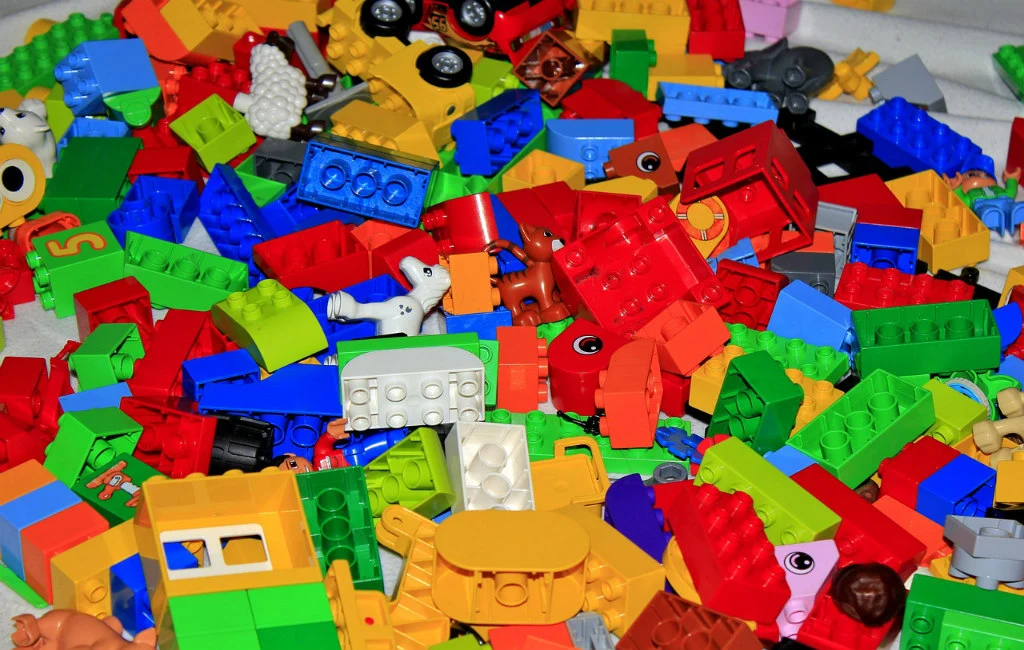What are Building Blocks?
If you ask kids – What are building blocks? You will be surprised by how many different answers you can hear.
When I asked my nephew Ana this question, she answered, “Blocks are to build things.” This is the most straightforward way children refer to the blocks, often focusing on their primary function: constructing various shapes, towers, or structures.
Kids might describe building blocks as pieces they can assemble to make whatever they imagine, whether a house, a car, or a monster.
Sometimes, kids will describe them as “building toys” because they understand that these toys are meant to help them create and design different objects.
What are building blocks?
Who hasn't played with building blocks or bricks as a child? Since the 1950s, colorful bricks have taken over the world of toys, creating increasingly diverse and complex universes.
I am the grandfather of two grandsons, Ana and Ivan. During their childhood, I noticed that they used the word “bricks” instead of “blocks.”
Children playing with a specific type of building block, such as Legos, may refer to them as “Legos,” a term they often use to describe any interlocking block, even if it isn't an official Lego piece.
This is normal because many generations have played with well-known and oldest brands, such as Lego.
How Do Building Blocks Work?
Building blocks allow users to stack, connect, and arrange pieces to create structures, patterns, or models. Depending on the type—classic wooden blocks, LEGO bricks, or magnetic tiles —they rely on principles of balance, stability, and interlocking mechanisms.
Through play, they enhance problem-solving skills, hand-eye coordination, and spatial awareness, making them fun and educational for all ages.
Guide to Building Blocks
Building blocks are versatile toys and educational tools that encourage creativity, problem-solving, and spatial skills. They are made of various materials, such as plastic, wood, or foam, and range from classic LEGO sets to STEM-focused engineering kits.
These blocks help children and adults develop fine motor skills, logical thinking, and an interest in architecture or science. Building blocks are a foundation for imaginative play and hands-on exploration, whether used for fun or learning.
What are building blocks? And building brick toys?

Building blocks and bricks are two terms often used interchangeably, but subtle differences exist.
Building blocks power
They usually encompass various shapes and sizes, including cubes, cylinders, and arches. It can be made from wood, plastic, or foam. The blocks often emphasize open-ended play and creative exploration.
Building bricks power
Typically, it refers to rectangular blocks with studs on one side and corresponding holes on the other, allowing them to be connected. They are usually made of plastic and emphasize construction and building complex structures.
While the terms are often used interchangeably, building bricks are a specific type of building block. On the other hand, building blocks encompass a broader category of toys that can be used for various play activities.
Building Blocks Instructions
If you now understand what building blocks are, let's examine how to play with them (bricks) and the importance of instructions on how to use them.
To know what building blocks are, block instructions offer a variety of benefits for both children and parents when playing with construction sets:
What are the building blocks For Children?
- Instructions provide a clear path to understanding the building blocks. They help children break down complex projects into manageable steps, which fosters a sense of accomplishment and reduces frustration.
- While instructions provide a starting point, they encourage children to experiment and deviate from the plan. This sparks creativity and imagination, leading to unique and personalized creations.
- When faced with challenges in following instructions or building a complex structure, children develop problem-solving skills as they figure out alternative solutions.
- Building blocks require precise hand-eye coordination and agility, which improves fine motor skills.
- By visualizing and constructing 3D structures, children develop a better understanding of spatial relationships and geometry.
- Following instructions and completing a project can teach children the value of perseverance and patience.
What are the building blocks For Parents?
- Knowing what the building blocks are and what they offer allows parents and children to bond and create together.
- Parents can learn alongside their children, fostering a sense of shared discovery and exploration.
- Building blocks can be a calming and meditative activity for parents and children, providing a much-needed break from daily routines.
- By following instructions and building structures, children learn valuable skills in problem-solving, spatial awareness, and fine motor skills.
In conclusion, building block instructions are valuable tools for children and parents. They provide a structured approach to building, encourage creativity, and foster a positive learning experience.

What are building blocks, and how do you play with Building Blocks – Instructions
Many popular building block brands provide detailed instructions with their construction sets. Here are a few of the most well-known brands:
- LEGO: Renowned for its diverse range of themed sets, each with clear and easy-to-follow instructions.
- Mega Construx offers detailed instructions for building iconic characters and vehicles from popular franchises such as Halo, Pokémon, and Transformers.
- K'NEX: This brand focuses on building kinetic models, and its sets include detailed instructions for creating moving and interactive creations.
- Meccano: This classic brand offers engineering-focused sets with step-by-step instructions to build complex machines and structures.
Whether you're a parent, educator, or simply a fan of creative play, Knowing What are building blocks will help you decide which block size is right for your child. Discover all benefits of big building blocks!
Conclusion – What are the building blocks
Building blocks are more than just toys—they are powerful tools for learning, creativity, and development. From enhancing problem-solving skills to inspiring imaginative play, these versatile sets have stood the test of time as favorites among children and educators alike.
Whether made of wood, plastic, or foam, building blocks provide endless opportunities for fun and education. They make them a timeless choice for fostering growth and curiosity in kids of all ages.
Ready to explore what are building blocks? Dive into their limitless potential and see how they can transform playtime into a building adventure!

